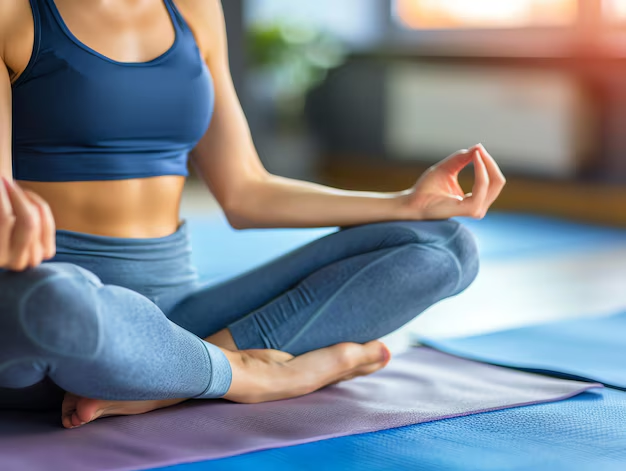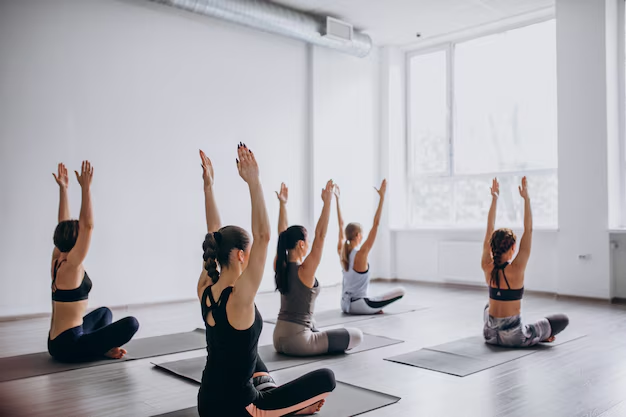The History and Philosophy of Yoga.
Yoga is a system coming from the times more than five thousand years ago, India, which interconnects the gross physical, subtle mental, and causal spiritual dimension of existence. The history of power of yoga began as early as the Vedas which are the holy books dating back the oldest of all. Yoga has changed in the course of centuries, and the latter they proposed various interpretations and practices, the main of which was to unite with the divine and to reveal the essence of the self and the attain of atmajivanam and swastha.
Important principles including ‘asana’ and ‘pranayama’ are essential concepts in the yoga world view. In Yoga, ‘Asana’ is defined as the technique of maintaining a comfortable seated or supine position requisite to foster strength, flexibility balance and prepare for the subsequent spiritual exercise. ‘Pranayama’ the other hand practices concerned with breathing, aimed at controlling the circulation of prana in the body. This means that breath and posture work hand in hand in ensuring that the practitioners are able to go deeper into their inner selves for meditation.
Patanjali, who is an ancient sage of India, is generally assigned with the appearance and standardisation of yoga through his treatise, the Yoga Sutra. In these texts, he describes the eightfold path of yoga which one has to follow they form the structure for the process of self grooming. Ethical disciplines are referred to as Yama and Niyama, physical practices are referred to as Asana, breath control is called Pranayama, withdrawal of the senses is referred to as Pratyahara, concentration as Dharana, meditation is known as Dhyana and last of all the final goal is known as Samadhi. These principles do not only affect health but also mind and soul of people.
It has been previously established that the culture and tradition of the historical and philosophical practice of yoga are still valid in today’s society, making yoga a transformative practice. For anyone that is on the path towards self-actualization, knowledge of these roots and antecedents enriches the process, which shows that yoga has more than physical benefits.
Physical Benefits of Yoga
As is common knowledge, yoga can be credited for given numerous and complex impacts on the physical health of an individual. Another benefit of practicing yoga particularly in an exercise programme is increased elasticity. Maintenance of joint pliability promotes increased muscle fibres, as well as the expansion of the articular capsule thus disallowing limited joint range. While people bend and twist in different positions like downward-facing dog or the pigeon pose, flexibility is achieved over time thus it is a healthy way of attaining a flexible body.
Yoga also offers the need acumen of strength as another important advantage. Most of yoga practices such as Hatha and Ashtanga entails a balancing of the body weight in some of the stances. This is natural resistance training that implies development of those muscles that are involved in holding the baby against the body, belly, back, arms, and legs muscles. For instance the ‘warrior series’ develops leg strength in addition to stability of the core muscles vital for activities in addition to daily undertakings.
Another aspect of one’s physical well-being that is managed and enhanced by practice of yoga is balance. Performing some twists to pose like tree pose or half-moon pose destabilises an individual to help them shape better coordination plus equilibrium. This improvement in balance not only helps athletes but also assist elderly people and it decreases the incidences of falling with increased mobility.
In addition, having a steady practice of yoga lowers one’s chances of getting injured. That is, by enhancing flexibility, strength, and balance, practitioners build a protective framework from which a diversified spectrum of endeavors can be accomplished. Proper alignment is another important factor; particular yogasana involves correct positioning of the body which proves useful to avoid stress on muscles and bones during activities.
Therefore, it can be viewed that the physical operations that are involved in exercising while practicing yoga make it an extremely useful practice to those who aim at improving their physical health. However, yoga for fostering flexibility, strength and balance with a perspective of not allowing any form of injuries would go along way in enhancing health and well being.
The Mental and Emotional Impact of Yoga
In my personal experience, yoga goes beyond the external, muscular movements and transformative in one’s mind and heart. People practice yoga as a cure to various stresses in life with the mindfulness and meditation aspects of this activity being most helpful. These practices work towards the development of mindfulness which helps a person to understand and deal with the emotions felt. This practice has been known to reduce symptoms related to anxiety and depression according to many people meaning that it is therapeutic in nature.
The preceding claims are substantiated by scientific research which show that yoga has the capacity to reduce cortisol which is famously known as stress hormone. Such stress hormones such as cortisol are associated with mental disorders, for example, anxiety, and mood. Through practicing yoga people are able to help the nation deal with stress and in effect create harmony in the body and the soul. Thus, a physiological response to doing yoga makes people be more grounded and ready to confront life to confrontation.
When sharing their own stories, as yoga practitioners, many of them refer to processes of change that have taken place at the psychical level too that is within the mind. For instance, students who have had anxiety issues have stated that practicing yoga often has helped them to deal with their fears more properly as well as embrace life in a more optimistic manner. Recommendation often emphasize the camaraderie that people refer from the yoga classes, which helps in building up the interpersonal relationship among them. These bonds can offer more emotional security and this tends to helpful for those who are suffering from mental disorders.
In addition, the element of breath control, an obviously relaxant one, and, therefore, the concentration of mind in yoga is bound to bring the individual to realize a closer association with the mind and the body. This can bring improvement in emotional self-attunement and hence improvement in control over self instead of being a mere response to stress. In total, the mental and emotional aspect of yoga cannot be overemphasized, therefore supporting the use of yoga in improving peoples psychological wellbeing.
Discover the Power of Yoga : A Journey to Wellness

Incorporating Yoga into Your Daily Life
Practicing yoga is one way of improving your lifestyle as it makes it easy to conduct yourself in affairs of the body and the mind. There are a number of effective tips that you can use regardless your level of how to integrate yoga into your daily routine. One of them is to practice initially with home-based activities of smaller duration. For first time, it’s advisable that they set-aside about 10-15minutes and only practice the most common poses and stretches. Scheduling the practice to be done during a certain time of the day, for instance, during the morning or evening, can help the act to be fulfilling.
It is beneficial for the persons who want the trainer assistance to opt for local yoga studios or nearby community centers. The typed of setting tend to have lessons provided based on skill, which can range from initial stage to the expert one. Identifying a class raises motivation and guarantees you appropriate guidance that can enhance your practice a lot. Additionally, there is common practice of free trials in which you get to choose the most suitable studio.
There are now more and more popular and easy to access online resources. There is so much information on websites, applications, and video platforms that offer many classes in yoga for free or through a paid subscription that answers your interests and time preferences. These resources enable variety that can easily be integrated into the current paced societies as a form of exercise.
If it is not possible to set up a separate room at home for strict practice of yoga, then one could spare a corner in the house for this purpose. This area should be a bit secluded with enough space for motion and it can be decorated by items like for instance candles, plants or pictures that can have a calming impact. Training has to be realistic—aim for basic steps before moving to such things as the ability to hold a single pose.
Further, a sustainable routine requires one to accept imperfection and accept the small efforts one is making towards creating a healthy routine. It is a good idea to seek support online you may find groups for yoga or wellness on social media platforms which will encourage and provide the sense of community with like-minded people thus making the experience of practicing yoga in day-to-day life more enjoyable.



